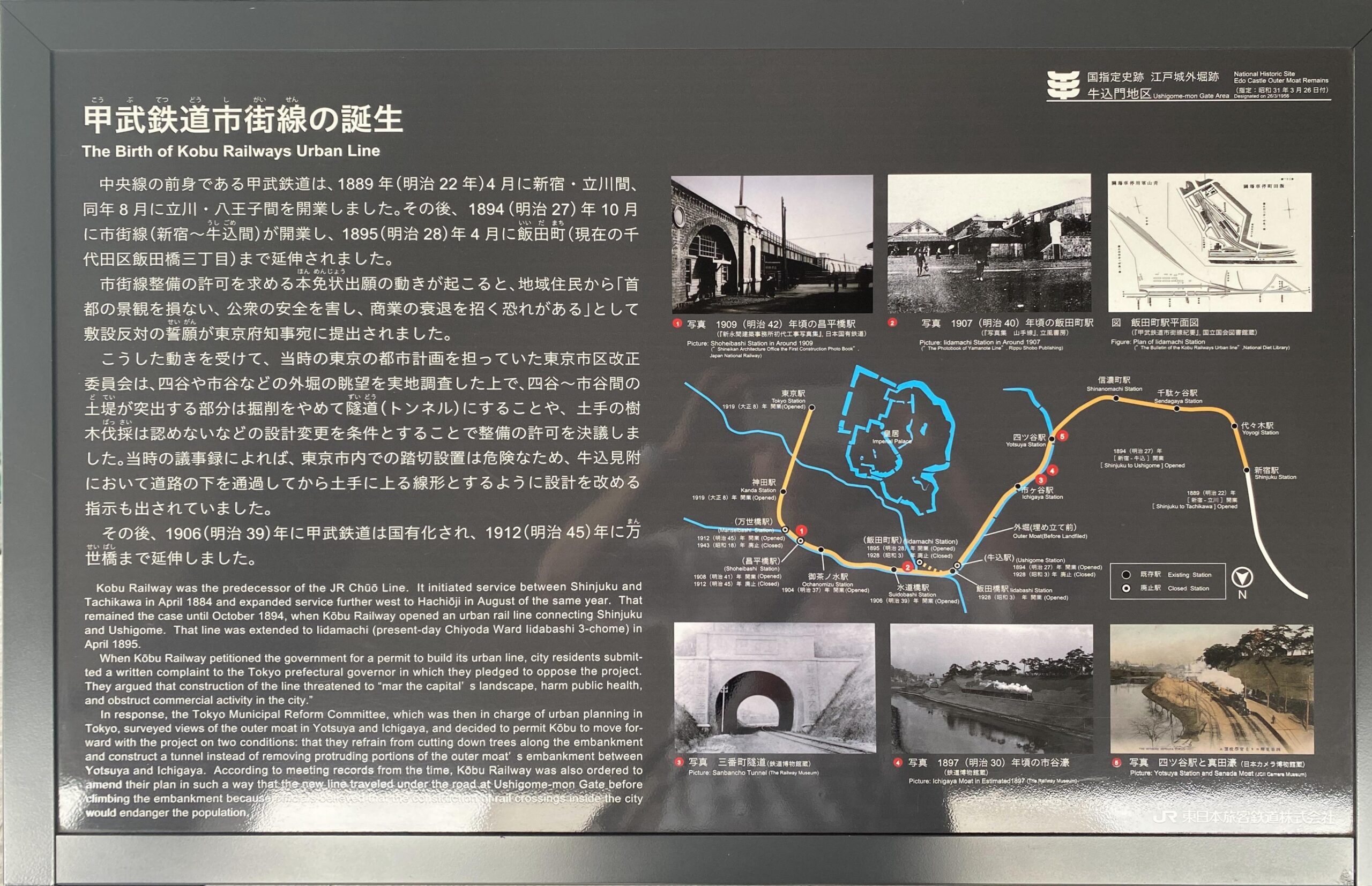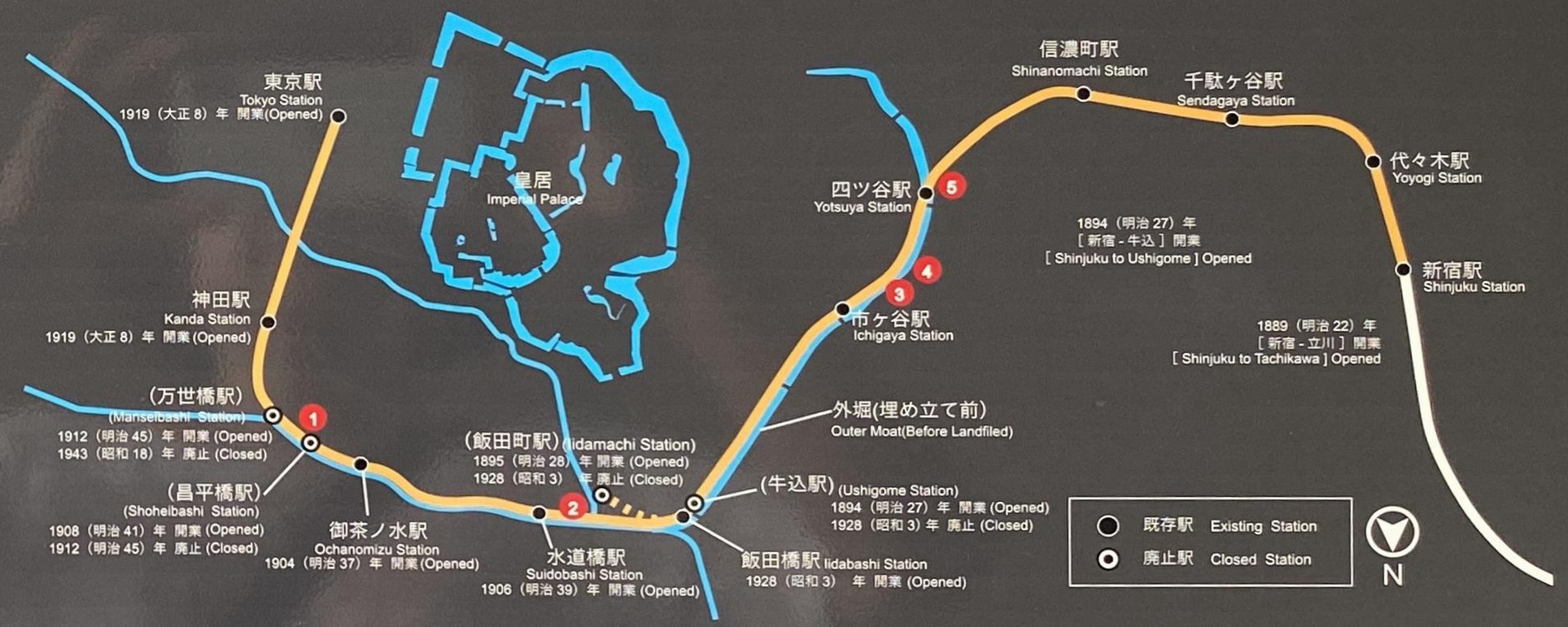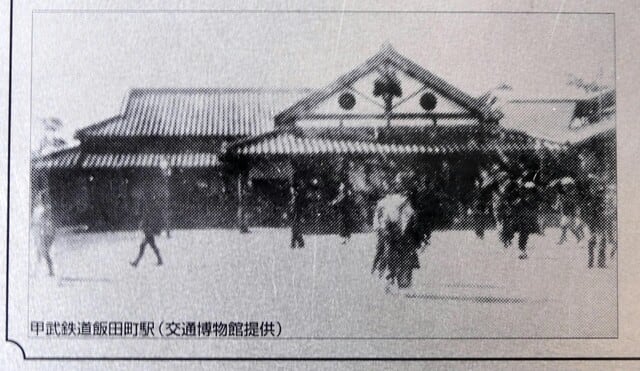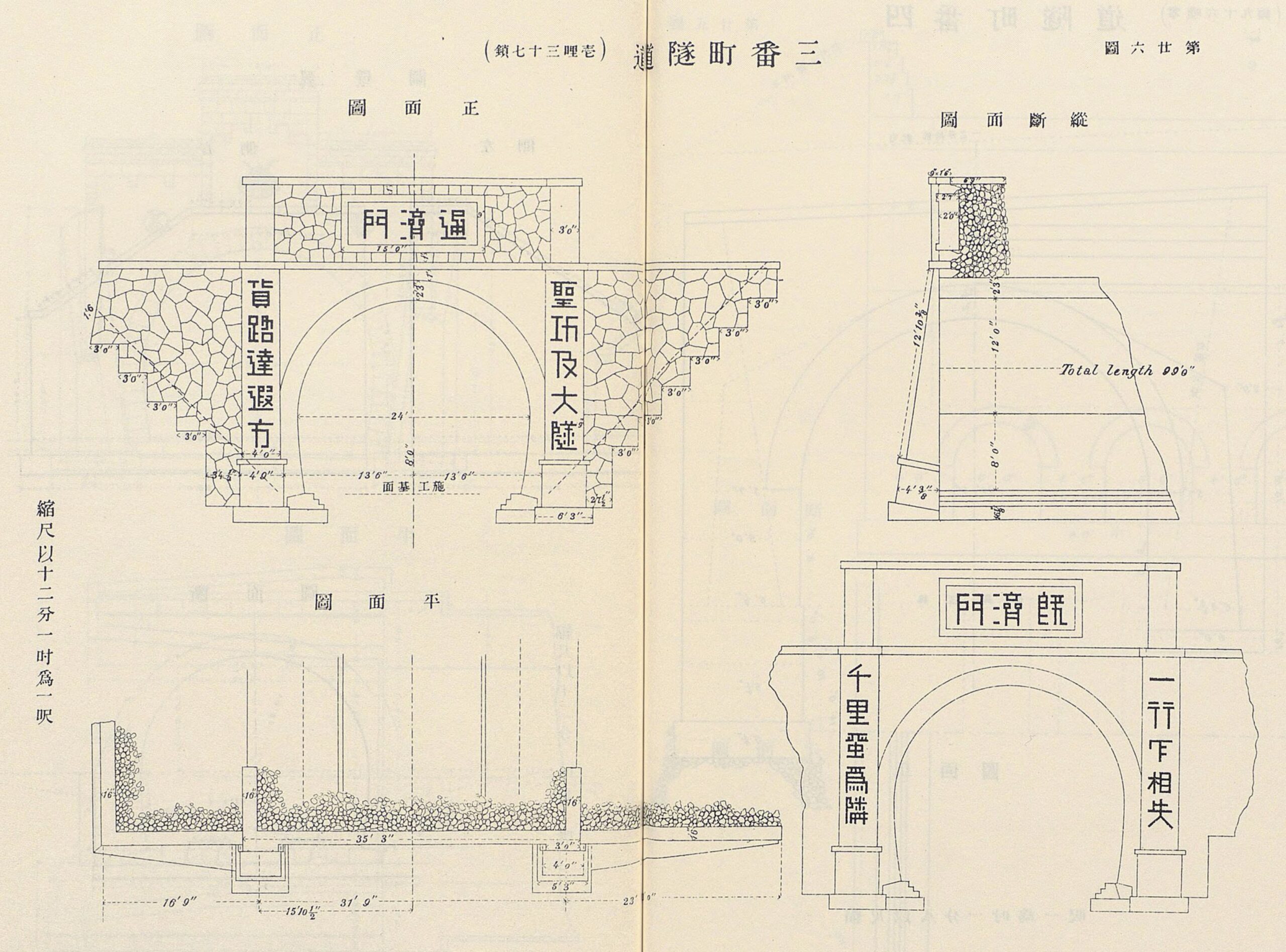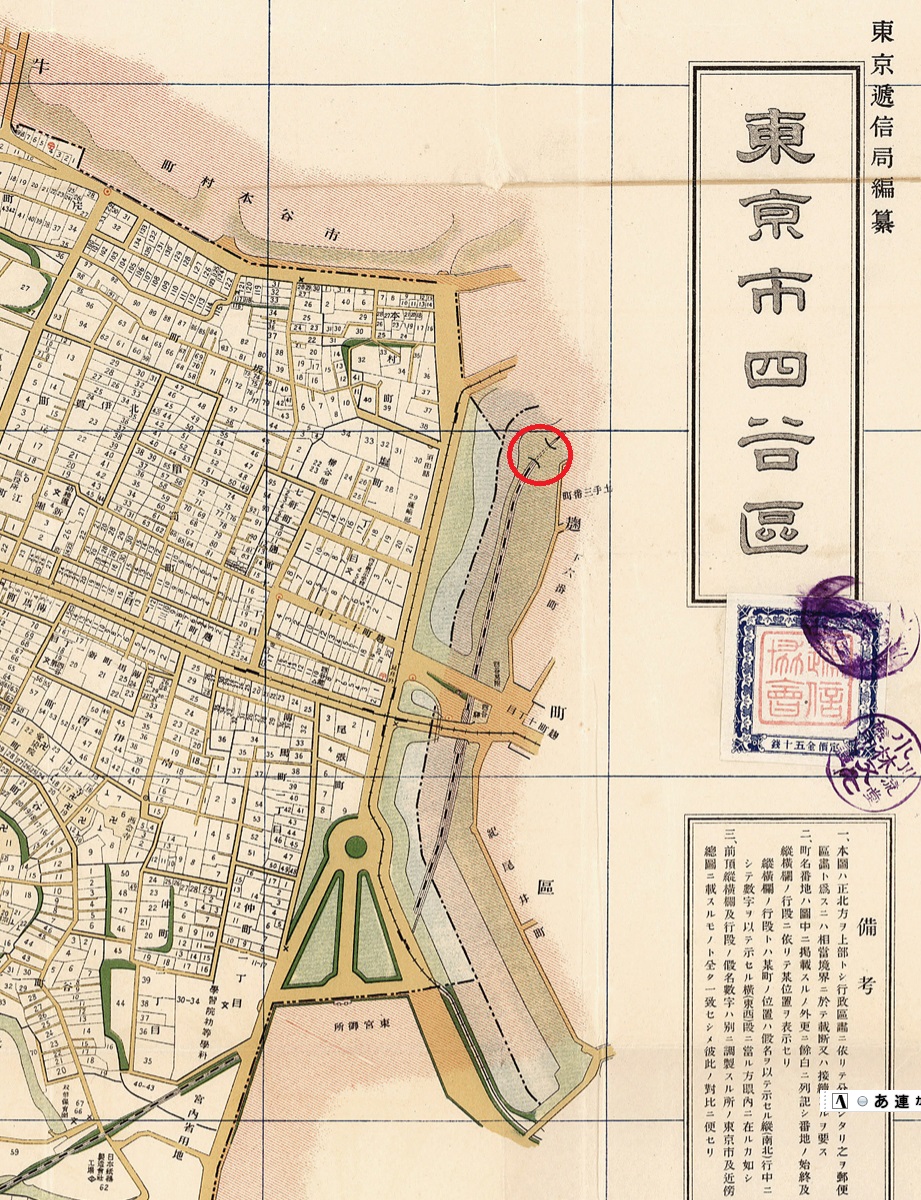2021年(令和3年)に飯田橋駅西口駅舎の2階に「史跡眺望テラス」ができ、「史跡紹介解説板」もできています。2階の主要テーマは「牛込門から牛込駅へ(鉄道の整備)」で、テラス東側にパネルが4枚(左から①、②、③、④)、さらに単独パネル(⑤)があります。これとは別に1階にも江戸城や外濠の「史跡紹介解説板」などができています。
パネル①は「甲武鉄道市街線の誕生」です。写真5枚と図1枚を掲載し、日本語と英語で解説しています。
| 甲武鉄道市街線の誕生 The Birth of Kobu Railways Urban Line 中央線の前身である甲武鉄道は、1889年(明治22年)4月に新宿・立川間、同年8月に立川・八王子間を開業しました。その後、1894(明治27)年10月に市街線(新宿~牛込間)が開業し、1895(明治28)年4月に飯田町(現在の千代田区飯田橋三丁目)まで延伸されました。 市街線整備の許可を求める本免状出願の動きが起こると、地域住民から「首都の景観を損ない、公衆の安全を害し、商業の衰退を招く恐れがある」として敷設反対の誓願が東京府知事宛に提出されました。 こうした動きを受けて、当時の東京の都市計画を担っていた東京市区改正委員会は、四谷や市谷などの外堀の眺望を実地調査した上で、四谷~市谷間の土堤が突出する部分は掘削をやめて隧道(トンネル)にすることや、土手の樹木伐採は認めないなどの設計変更を条件とすることで整備の許可を決議しました。当時の議事録によれば、東京市内での踏切設置は危険なため、牛込見附において道路の下を通過してから土手に上る線形とするように設計を改める指示も出されていました。 その後、1906(明治39)年に甲武鉄道は国有化され、1912(明治45)年に万世橋まで延伸しました。 |
飯田町 1895年(明治28年)、甲武鉄道の東京側のターミナル駅として開設。当時は小石川橋通に面し、現在大和ハウス東京ビルとなっている場所に駅舎があった。1928年(昭和3年)当駅の電車の発着ホームと牛込駅を統合して飯田橋駅が開業。飯田町駅は貨物専用駅して専属するも、1999年(平成11年)に廃止。
東京市区改正委員会 1888年(明治21年)東京市区の営業、衛生、防火及び通運等永久の利便を図るため東京市区改正条例(勅令第62号)が公布し、東京市区改正委員会が設置された。1919年(大正8年)、都市計画法(旧法)が制定され、翌年1920年1月1日付で施行、そのため市区改正条例は廃止。
土堤 どてい。土を小高くもって作られた水や風を防ぐ堤防や城の周りに敵の侵入を防ぐために設けた土の堤のこと。土手。
隧道 ずいどう。トンネルと全く同じ意味。
万世橋 1912(明治45)年、「万世橋駅」が千代田区神田須田町1-25-4に開業。昭和18年に休止。赤レンガの万世橋高架橋で、ホームや階段などの駅の施設が一部残り、2012年(平成24年)7月より駅遺構を整備し、2013年(平成25年)9月14日に「mAAch ecute(マーチエキュート) 神田万世橋」が開業。
| Kobu Railway was the predecessor of the JR Chuo Line. It initiated service between Shinjuku and Tachikawa in April 1884 and expanded service further west to Hachiōji in August of the same year. That remained the case until October 1894, when Kōbu Railway opened an urban rail line connecting Shinjuku and Ushigome. That line was extended to Iidamachi (present-day Chiyoda Ward Iidabashi 3-chome) in April 1895. When Kōbu Railway petitioned the government for a permit to build its urban line, city residents submitted a written complaint to the Tokyo prefectural governor in which they pledged to oppose the project. They argued that construction of the line threatened to “mar the capital’s landscape, harm public health, and obstruct commercial activity in the city.” In response, the Tokyo Municipal Reform Committee, which was then in charge of urban planning in Tokyo, surveyed views of the outer moat in Yotsuya and Ichigaya, and decided to permit Kōbu to move forward with the project on two conditions: that they refrain from cutting down trees along the embankment and construct a tunnel instead of removing protruding portions of the outer moat’s embankment between Yotsuya and Ichigaya. According to meeting records from the time, Kōbu Railway was also ordered to amend their plan in such a way that the new line traveled under the road at Ushigome-mon Gate before climbing the embankment because officials believed that the construction of rail crossings inside the city would endanger the population. |
①写真 昌平橋仮停車場入口

1909(明治42)年頃の昌平橋駅 日本国有鉄道東京第一工事局「新永間建築事務所(東京第一工事局創設期名称)初代工事写真集」1978
②写真 飯田町駅
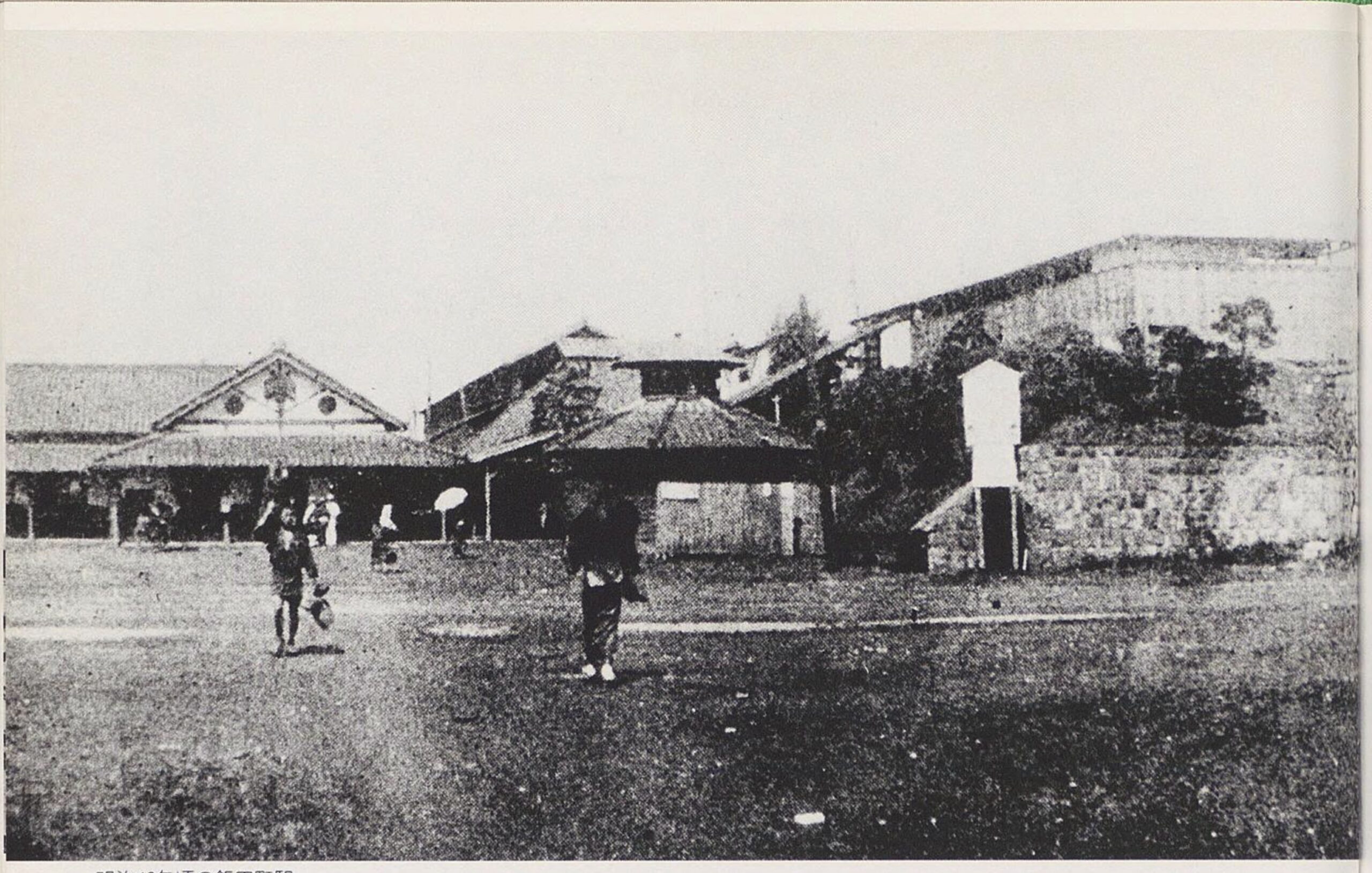
飯田町駅 毎日記念誌出版会「山手線 : 写真集」立風書房、1980
図 飯田町停車場図
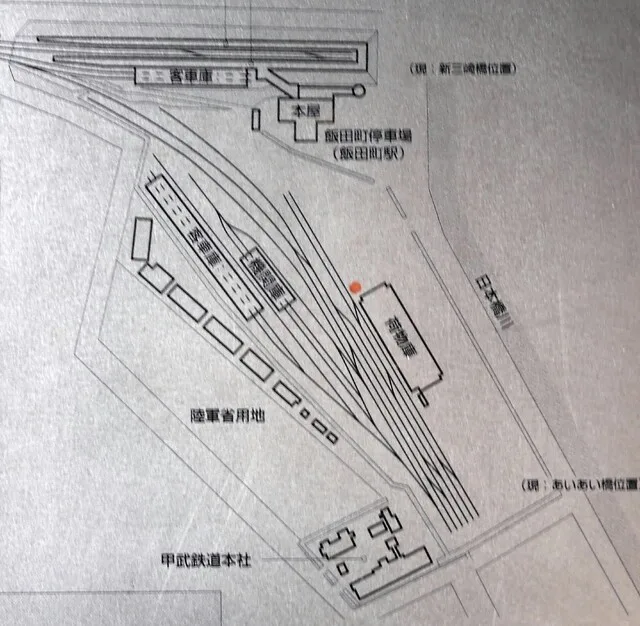
飯田町駅。「飯田橋アイガーデンテラス」3階テラスの甲武鉄道「ゼロキロポスト」モニュメント
③と⑤は鉄道博物館や日本カメラ博物館に写真を依頼する場合以外にはほぼ入手は不可能です。で、ここからは入手しやしい写真を中心に話をしていきます。
③写真 三番町トンネル 四ツ谷~市ヶ谷 明治27年竣工、昭和初期撤去。
④写真 1897(明治30)年頃の市谷濠
「新日本鉄道史」の正面左のトンネルには今はない三番町隧道です。
⑤写真 四ツ谷駅と真田濠 この写真を日本カメラ博物館以外では発見できませんでした。したがって、下図も別の写真です。
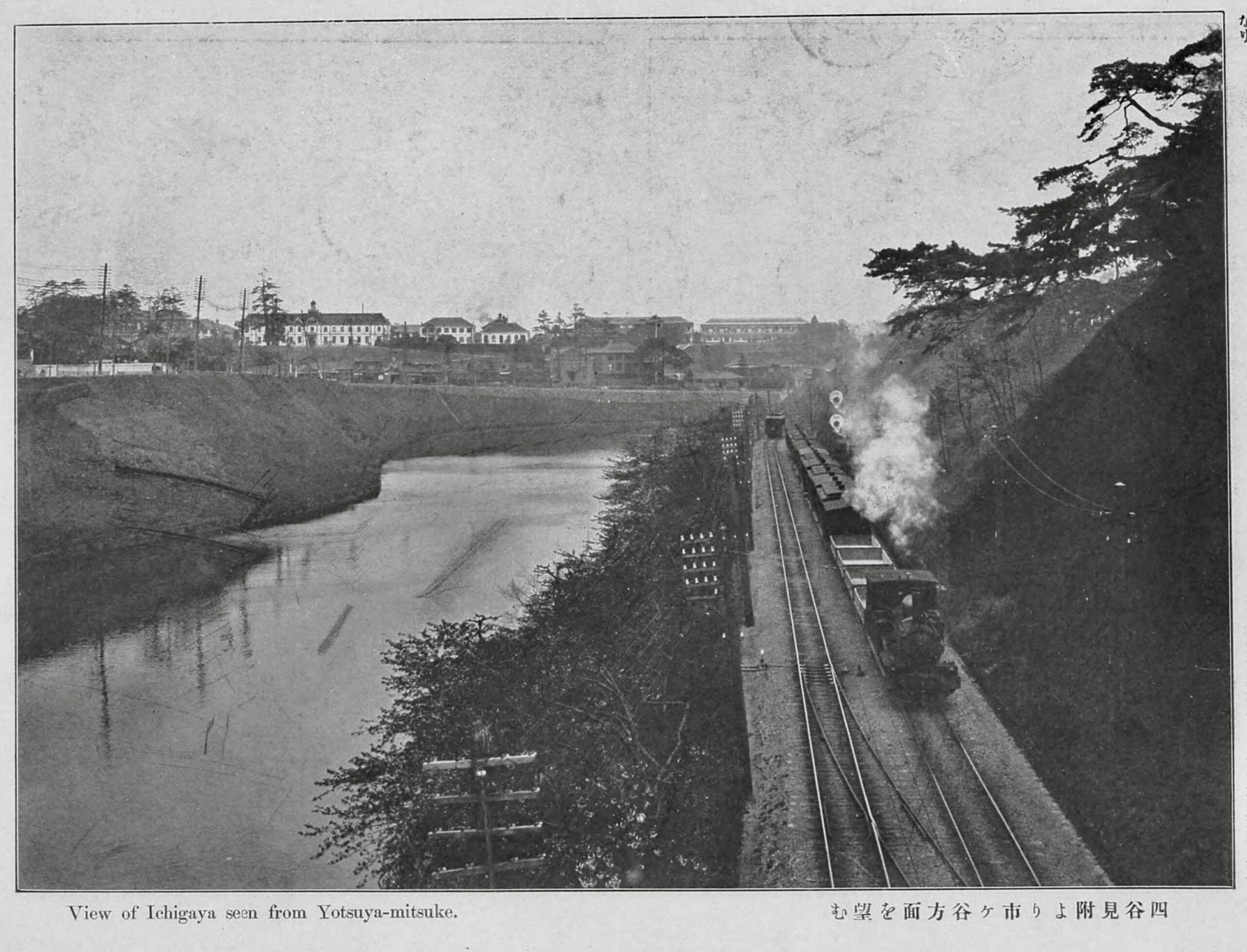
四谷見附より市ヶ谷方面を望む (小川一真出版部「東京風景」明治44年)
